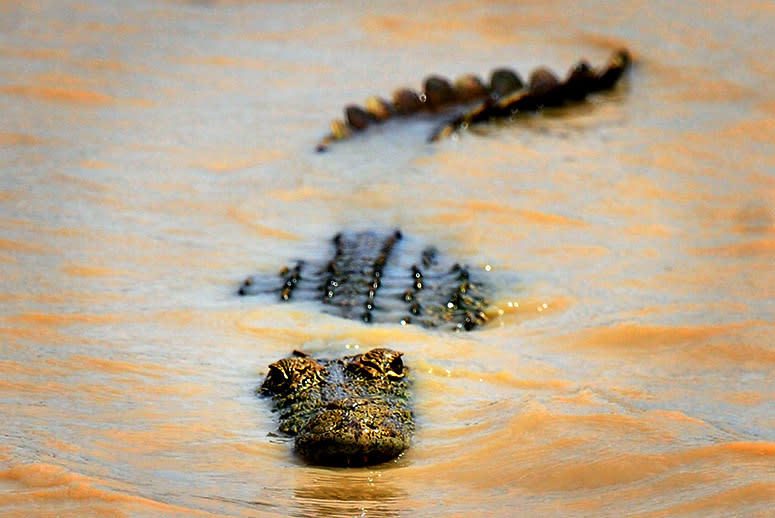A Warming World Could Be a Crocodile-Infested One

A warming planet is a negative consequence for a lot of creatures. The projected rise in temperatures means a more acidic ocean that hurts marine life, and drier, hotter weather patterns don’t bode well for creatures relying on snow and ice to survive.
But there is one species that stands to gain from climate change: crocodiles.
The heat-loving reptiles could thrive as the Earth gets hotter, growing not just in numbers but also in species variety, say British and U.S researchers in a new study.
The team looked at the animals’ history to gauge how they might cope in the future, based on their past ability to evolve and adapt to various environments.
“The past is the key to the present and the future,” said study coauthor Jon Tennant, a paleontologist at Imperial College London. “The only way we can really predict how future climate change is going to impact different groups of animals is by looking at historical fossil records revealed to us.”
And crocodiles offer some of the best fossil records known to man, having been around some 250 million years.
RELATED: Fashion Icon Jane Birkin Wants Her Name Removed From ‘Cruel’ Crocodile Handbags
“They’re an unparalleled species to investigate,” said Tennant, who worked with researchers at Oxford University, the University of Birmingham, and the Smithsonian Institution on the study.
Sixty-five million years ago, the savvy reptiles survived the extinction period that wiped out the dinosaurs. As the planet cooled and sea levels fluctuated, crocodiles shrank to a third of their original number.
The cold-blooded animals need a warm sun and ample water to survive. And when temperatures dropped, crocodilians started migrating out of the northern hemisphere toward Africa and South America.
Today, 23 different species of the scaly reptiles, including as caimans, gavials and alligators, managed to survive and adapt to their new territories.
As larger animals like dinosaurs succumbed to the changing environment, crocodiles took advantage of the space and resources left behind as other predators disappeared.
So, what helped them survive?
Researchers say it’s hard to know for sure, but the species has shown remarkable resilience and an ability to take on the characteristics of armadillos, and even sharks and dolphins, in order to survive.
“They’ve done crazy things like take on bizarre, alien forms which were however still related to crocodiles, which shows how they adapted,” Tennant said.
And as pollution drives up the Earth’s temperature, could crocodiles multiply in number and invade the northern hemisphere?
“It won’t be an army of crocodiles popping up overnight, but we might see crocodiles in places we haven’t sent them before,” Tennant said. “It’s not like the movies where crocodiles take over the Earth, but we now have 23 species. In the future, we could see many different forms, or we might only see one or two new species.”
The more pressing issue for crocodiles, he said, is loss of habitat due to human encroachment.
“One takeaway from our study is to look at how humans impact the planet, because we’re messing up the environment in an unnatural way,” Tennant said.
Related stories on TakePart:
• In Florida, Officials Ban the Term 'Climate Change'
Original article from TakePart


